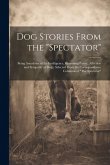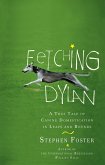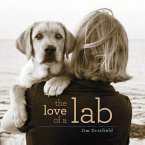This book has 32 chapters about dogs, my own, my friends', and those studied in the new dog labs sprouting up in academia. It is written in what my editor called a "clear and engaging style." The novelist, Alex Austin, author of "Nakamura Reality," said it was "An enthralling blend of science and anecdote." Kirkus Reviews called it a "must read," with "fascinating implications," as well as praising my scientific research, combined with my reminisces about dogs. They conclude that the book is ".., persuasive and engaging ...and a must read for anyone interested in the long partnership between humans and dogs." Josh Matt loved it as a memoir, as well as a dog book. The book starts with a border collie herding sheep in Wales, then goes on to my dog Flippy's herding a group of angry girls intent on "whupp(ing) my ass," so that they couldn't touch me, to Ishmael's herding a dairy farmer's cows the first day we moved to the country, and also his herding guests at our house parties I tell how Pooh guarded our land 24/7 for 14 years, a job she took on by herself. There are also chapters on whether dogs can think, whether they have a sense of time, whether they can figure out what humans will think if the dog acts a certain way, which is called having "a theory of mind." "The Purebred Dog' and "The Purity of Purebreds" reveals some surprising dog behaviors. There is also a chapter on how Skeezix, my dog, uses his eyes to communicate to Scamp, my other dog. I call this "eyetalking." and the complex messages he can convey are very unexpected. "Do Dogs Have Extrasensory Perception?" and 'The Umwelt of the Dog," about how dogs perceive the world around them, show amazing feats dogs are capable of, which ties in with "All in a Day's Work," and "To Serve and Protect." This last describes how dogs are used in current ws situations. There are also chapters on how dogs and wolves differ, whether dogs are tamed wolves (they're not), how scientists can date how long ago dogs became dogs through fossil evidence and also the new DNA analyses. One chapter is about other domesticated animals, all domesticated because of dogs. Then there are chapters on feral dogs, village dogs, and ownerless dogs. It also explodes the myths about how dogs became dogs, and when they did. Finally, the last chapter is "How Dogs Created Civilization." There are many wonderful dog books on the market, many written by scientists, but none which covers the ground this one does. Even if you read a lot of books about dogs, you will find much to surprise and amaze you. My 8 years of research into dogs, as well as my personal experiences with them have certainly amazed me again and again..
Hinweis: Dieser Artikel kann nur an eine deutsche Lieferadresse ausgeliefert werden.
Hinweis: Dieser Artikel kann nur an eine deutsche Lieferadresse ausgeliefert werden.








